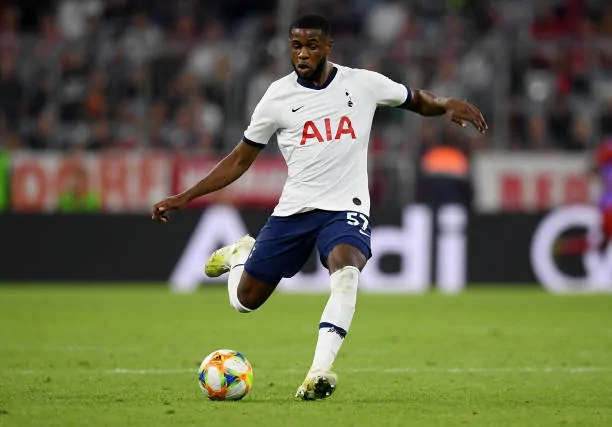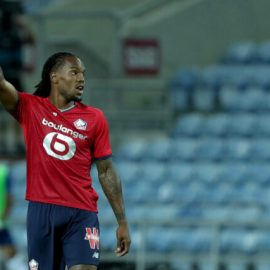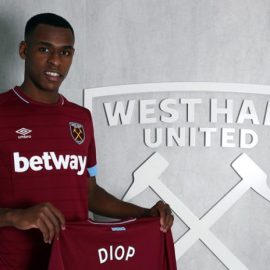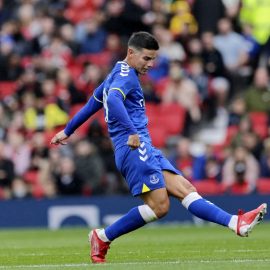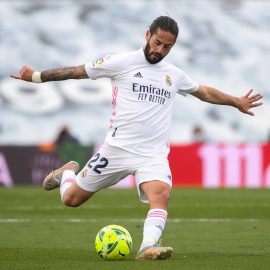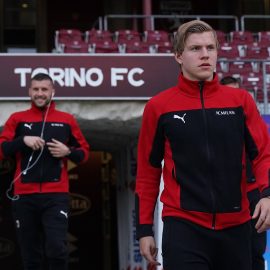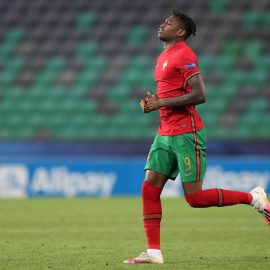With the recent appointment of Carlo Ancelotti as the new Chelsea manager and the recent announcement that Andriy Shevchenko will be coming back to the Bridge now that his one-year loan deal with AC Milan has expired, there are questions being asked of what Ancelotti / Chelsea will do with the 32-year-old striker.
While Shevchenko and many Chelsea fans are not optimistic about his future at the Bridge, Sheva still has great potential to finish his career in style and justify the money that was spent on him. The article discusses the following points:
- Why Shevchnko did not live up to his potential at Chelsea
- How Chelsea could have made better use of the Ukrainian international
- Why Shevchenko deserves one more season as a Chelsea starter under Ancelotti.
The time was fall of 1997 and the place was one that has become extremely familiar to Chelsea fans recently – the 98,000 capacity stadium in Barcelona – Camp Nou. The Spanish champions were taking on the 5 time Ukrainian Champions Dinamo Kiev in the Champions League group stage. After losing 3-0 to Dinamo in their hometown, Barcelona, led by Van Gaal, was looking to bounce back from their shocking defeat.
However, Barcelona had their hopes demolished by half-time after a hat trick from a phenomenal young Ukrainian – his name was Andrei Shevchenko. Would any blue-blooded Chelsea fan seriously say that they would not have wanted that Shevchenko to have played on the starting squad against Barcelona in this year’s semi-final?
Ever since Andrei Shevchenko joined Chelsea for a record transfer fee of 30 million pounds in the summer of 2006, it appeared inevitable that with such a star studded team; Chelsea would reign supreme over England and Europe. After nearly three years have passed, various pundits, analysts, and Chelsea mangers from Jose Mourinho to Felipe Scolari have leveled severe criticism about my hometown hero’s lackluster performance. However, those former Chelsea managers never used Sheva properly as they did not understand him.
First of all, in order to understand how Shevchenko operates, you must first understand Valeriy Lobanovsky, the old Dinamo Kiev manager whose unique philosophy made him the star that he eventually became. Shevchenko has stated on many occasions that he owes all of his success to his deceased old manager and he went as far as leaving his Champions League medal on his grave.
In a nutshell, Lobanovsky (a plumber by trade) was a pioneer in football theory when he became the first Soviet Manager in the 1960’s to request a computer to be used by his football club. The theory he developed was dubbed “scientific football” in which certain numerical values were assigned to each “action” in the game such as tackles, passes, and shots. (Foer 159, “How Soccer Explains the World”) and the computer would calculate each player’s “intensively” (tackles and goal shots), “activity” (tackles and passes), “error rate” (unsuccessful actions), and “effectively” (tackles, goals, assists, passes).
Lobanovsky considered the football team to be a collective (not unlike the Borg) and judged how each individual contributed to the team’s overall performance without specific positions for players. While this led to a focus on defense, it created highly disciplined teams and largely kept egos in place. He saw pace and cohesion as the keys to victory. Not only were his teams much fitter than opposing sides, the players also seemed to have a near-telepathic understanding of each other. A result perhaps of one of his favourite drills: blindfolded five-a-side matches.
When Lobanovsky took over the struggling Dinamo again in the fall of 1996, he implemented the system once again and stated that the team is a collective and not centered on individuals. Hence, the victory over the individual focused Barcelona a year later was not only due to Shevchenko’s brilliance, but each player doing their part in making the defense, the midfield, and the strikers effective.
After Shevchenko joined AC Milan in ‘99, the team, under Carlo Ancelotti (2001-2009) eventually adapted somewhat to Shevchenko’s collectively oriented style by having the team work together in an almost Christmas tree formation to get the maximum number of goals to Shevchenko and his partner up front Inzaghi. The Balon d’Or and the CL goal scoring records set by Shevchenko overlooked the fact that AC Milan, similar to Dinamo Kiev in the 1990’s was a well oiled machine that worked tirelessly on all parts of the pitch to make the team succeed. Shevchenko was simply performing his role to his best ability.
Since Roman Abramovich acquired Chelsea in 2003, his eyes were set on the brilliant striker. However, the owner of Milan, Silvio Berlusconi, who became Shevchenko’s Godfather, did everything possible to hold on to his “son” until Roman finally made the offer Silvio could not refuse – the record breaking £30.8 million pound transfer in May of 2006. At this point Roman was becoming very impatient with Mourinho’s Chelsea coming up short of winning the Champions League and decided to “help out” Jose by acquiring Ballack , Kalou and Shevchenko against the manager’s wishes. As a result, Shevchenko was in a bad situation from the start as the Chelsea midfield became destabilized while the manager was not happy to have him.
To elaborate, from 2004 to 2006 the Chelsea midfield had been very cohesive with the combination of Lampard and the Iceland international Eiour Godjohnsen, who was one of the most versatile players around as he had performed as a central-midfielder; as a right or left winger; as a holding-defensive midfielder or as a striker. He was replaced by the slower and older Ballack who just did not seem to give the necessary effort. Hence, the midfield feeding mechanism to the strikers such as Drogba, Shevchenko and Kalou had become weak. In addition, Shevchenko, in spite of being tired after Ukraine’s World Cup performance and having to go from a very mild Mediterranean climate in Milan to the cold and humid climate of England compounded the problem.
Despite all of this, Shevchenko scored in his Chelsea debut in the Community Shield in the 2-1 loss to Liverpool, and quickly delivered again in his first Premier League goal against Middlesborough. After this, Shevchenko’s exhaustion caught up with him and he fell into a bit of a drought. The back-to-back trophy-winning Chelsea manager Jose Mourinho blamed all of Chelsea’s problems on Shevchenko and benched him as a result. He went as far as saying that Shevchenko considered himself above the other players and was expecting preferential treatment. However, Jose was wrong to have Shevchenko take the blame as an individual for the collective lackluster performance of the team.
The breakdown of the locker room atmosphere at Chelsea has been well chronicled in Claude Makalele’s recent biography Tout Simplementu. “For two years at Chelsea we lived as a group of friends, dining together, getting drunk together, going to training together and winning matches together,” wrote the French international. The team resembled Lobonovsky’s vision of a collective. But then all of a sudden Mourinho broke the solidarity by treating certain players that he was instrumental in acquiring such as Drogba as stars.
The catalyst for this may have been Roman encouraging the team to play a more open and offensive oriented game, which Jose flatly refused to do. He began treating players that he perceived as being close to the Roman such as Shevchenko and Terry with contempt. Makelele was stunned that the “Special One” had forgotten to value the contribution of players and began taking credit for all success and blaming individual players for any failures. “He no longer believed that players were responsible for success but only his methods did.” In short, Jose’s ego was clouding his judgment.
In response, Roman, who was obviously good friends with Shevchenko due to a common language and perhaps not wanting to see his investment wasted, forced Jose to play Sheva. Andrei proved to be invaluable in the FA Cup when he scored the goal of the year on January 19th, 2007 against Tottenham by curling the ball into the Spurs net from an impossible angle. He would prove equally useful in the Champions League by scoring key equalizers against Valencia in the Group Stage and Porto in the Quarterfinals. Unfortunately, an untimely injury and the subsequent hernia operation would keep him out at the end of the season when Chelsea needed him most.
All in all, despite all of the problems, Shevchenko ended up having an adequate season with 14 goals, well short of his 24 goals for Milan in the award winning year of 2004 but by no means was a terrible performance as Jose implied. Shevchenko gave the following explanation: “The real problem is that I cannot find any continuity. I was doing well this season, scoring seven goals in my last 10 matches, but then I suffered a back injury. Before I am judged I would like to enjoy a decent run in the side now that I have adapted to English football. Italian football is about tactics and logic, whereas England is different, it is all about speed and instinct.”
During the summer, Shevchenko did everything he could to get back in shape and work on his speed after surgery, even going as far as training with an Olympic sprinter to bring himself up to form. Roman even brought in Avram Grant as Director of Football to help Andrei, which was interpreted by Jose’s as undermining his authority. However, the training would prove to be useful as Andrei scored the equalizing goal to prevent a humiliating loss to Rosenborg BK in the Champions League Group Game. Apparently, Jose could not stand Grant and Roman being right and left “by mutual consent” as a result. It appeared that now under Grant as head coach Shevchenko would finally shine. Unfortunately, Shevchenko only scored 5 goals in the Premier League that season and Grant appeared to have given up on him when he transferred in former gunner Nicholas Anelka to essentially take Shevchenko’s spot as backup striker, leaving Shevchenko on the bench once again.
When Scolari took over the Chelsea reigns in the summer of 2008, he promised to give Shevchenko a “fresh start” but later contradicted himself by playing Deco in his place in the season opener against Portsmouth. Shevchenko was sent on loan to Milan and has begun regained his form. His goal against England in the World Cup qualifier illustrated his resurgence.
The newly appointed Chelsea manager and Sheva’s old AC Milan manager, Carlo Ancelotti, stated that Chelsea’s mistake was that they did not use Shevchenko properly by persistently using the one-striker system with Drogba upfront rather than being more flexible and adjusting the midfield to feed the ball to two strikers (Drogba and Sheva) upfront like Milan did. In addition, Shevchenko never prospered because he never felt welcome in London – mostly because of Jose’s arrogance. The unjustified blame game under Mourinho certainly took its toll on him and likely hurt his subsequent performance.
All in all, with Drogba facing a possible 5 match ban from the Champions League, the Boys in Blue are in dire need of a second striker besides Anelka. In my humble opinion, Shevchenko could fill this role provided that the team is willing to accept him and the midfield is willing to adjust to accommodate the two striker strategy.
Why spend another 30 million pounds on Tevez or David Villa when Chelsea already has Sheva under contract and the real problem is in the midfield? Just like a roofer would not spend money on buying a customized golden drill bit when the drill battery is dead and the power cord is broken, Chelsea must fix the truly broken part of its team (midfield) rather than spending enormous sums fixing something that is working reasonably well (offense).
Despite his age of 32 (top players like Zidane, Beckham, Pele, Maldini played well into their 30’s), Shevchenko still has the skills and now has something to prove to Chelsea fans. Under Ancelotti, who understands Sheva and how to make a team play a common strategy rather than a group of individuals, Sheva may once again become the top striker we know him to be.
Sources: How Soccer Explains the World by Franklin Foer
Additional research and reporting by Mark Gallinsky.
Add Sportslens to your Google News Feed!
